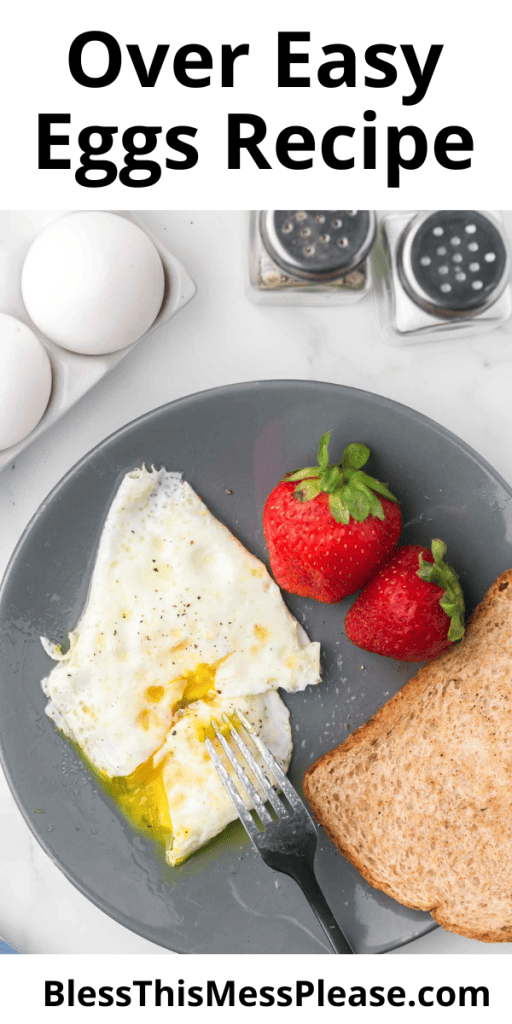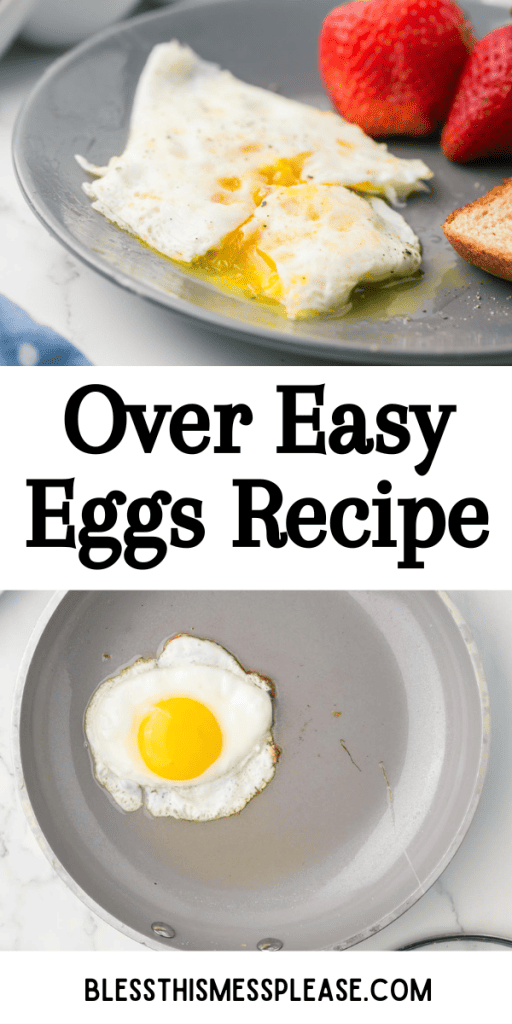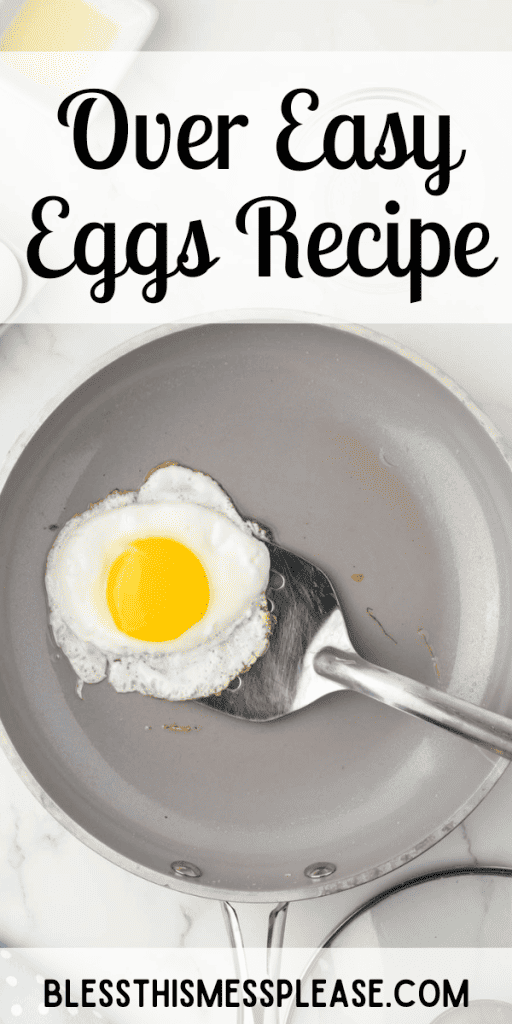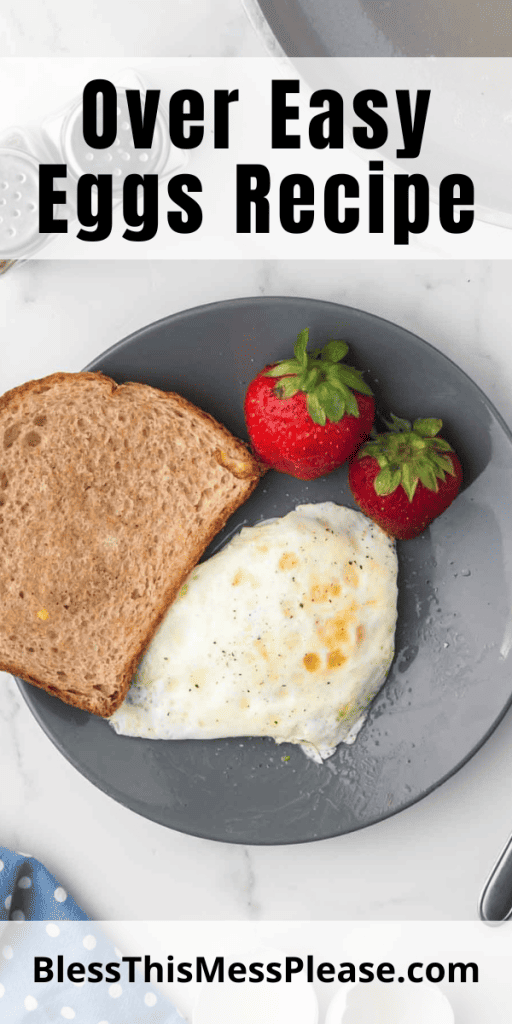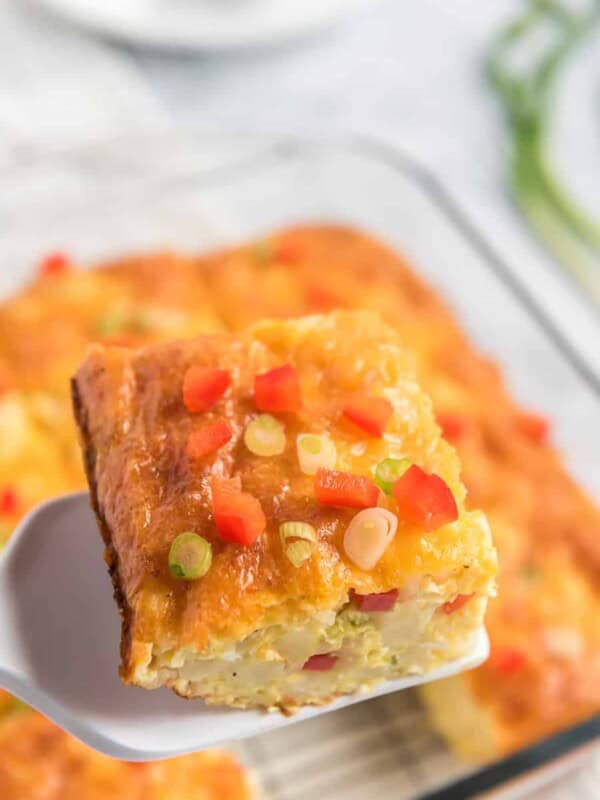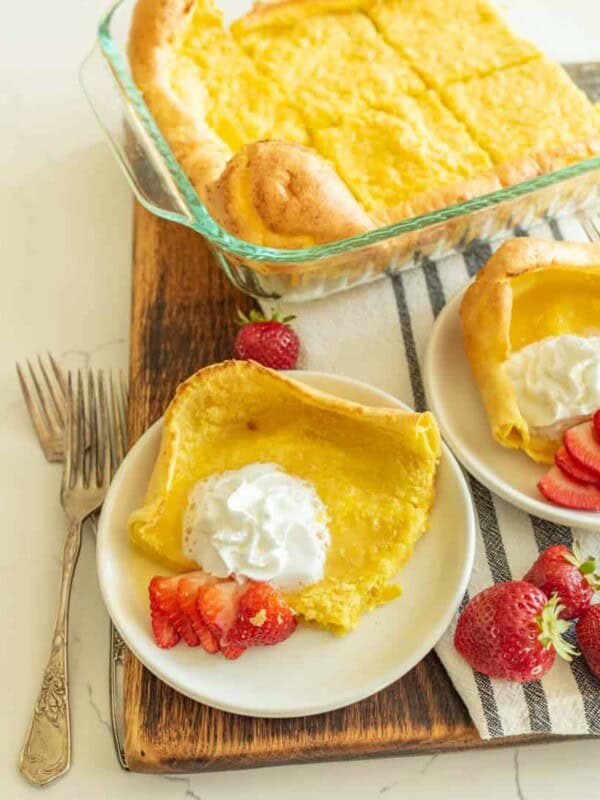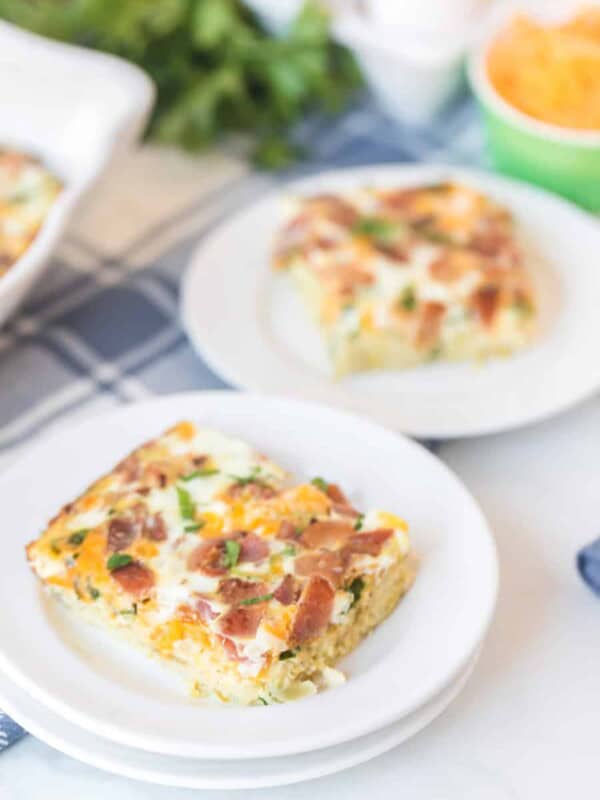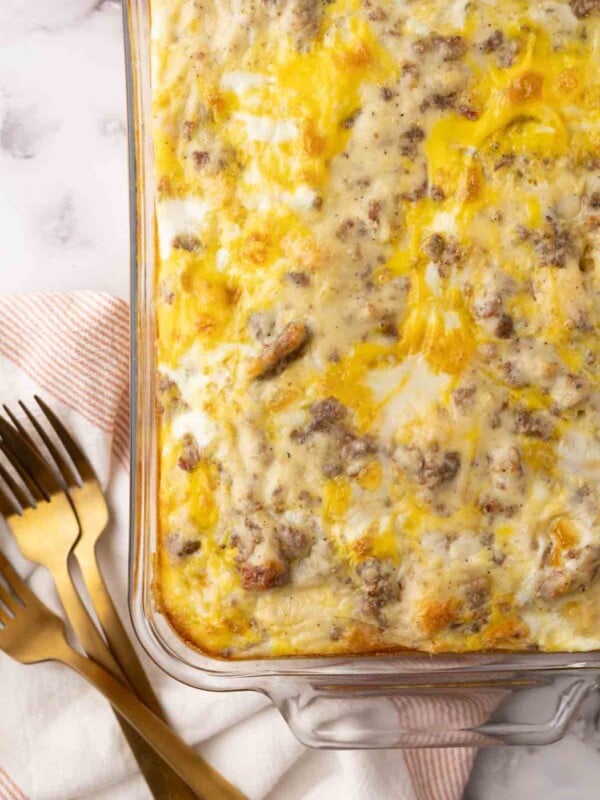Over Easy Eggs
on Dec 07, 2023, Updated Mar 14, 2024
This post may contain affiliate links. Please read our disclosure policy.
Welcome to the world of Over Easy Eggs, a breakfast staple loved for its simplicity, versatility, and delicious taste. This classic dish is a favorite for many because of its delicate texture, with a just-set white and a gooey, golden yolk. Ideal for a quick morning meal or a lazy brunch, over easy eggs are not just a dish but a delightful experience.
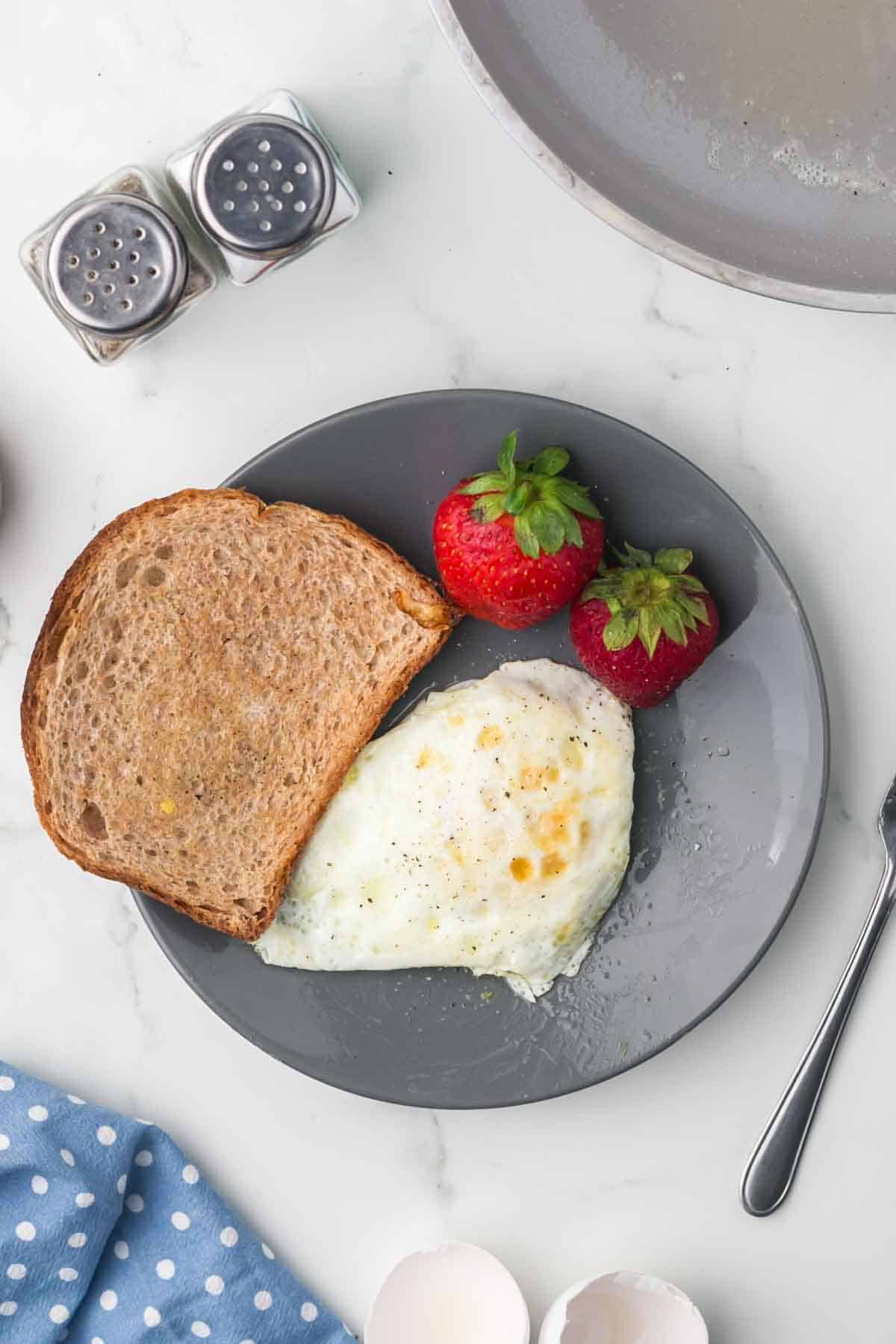
Over easy eggs are adored for their balance of textures and flavors. The slightly crispy edges of the whites paired with the creamy, rich yolk create a delightful contrast. They’re also incredibly versatile, pairing well with toast, bacon, and a variety of other breakfast items.
Learning to make over easy eggs is great because they’re healthy and quick to cook. They’re also inexpensive and can be mixed with lots of different foods for tasty meals. Plus, cooking them just right – with crispy edges and a soft, runny middle – feels good and is fun to do. It’s a handy skill for making a quick, yummy, and healthy breakfast.
Table of Contents
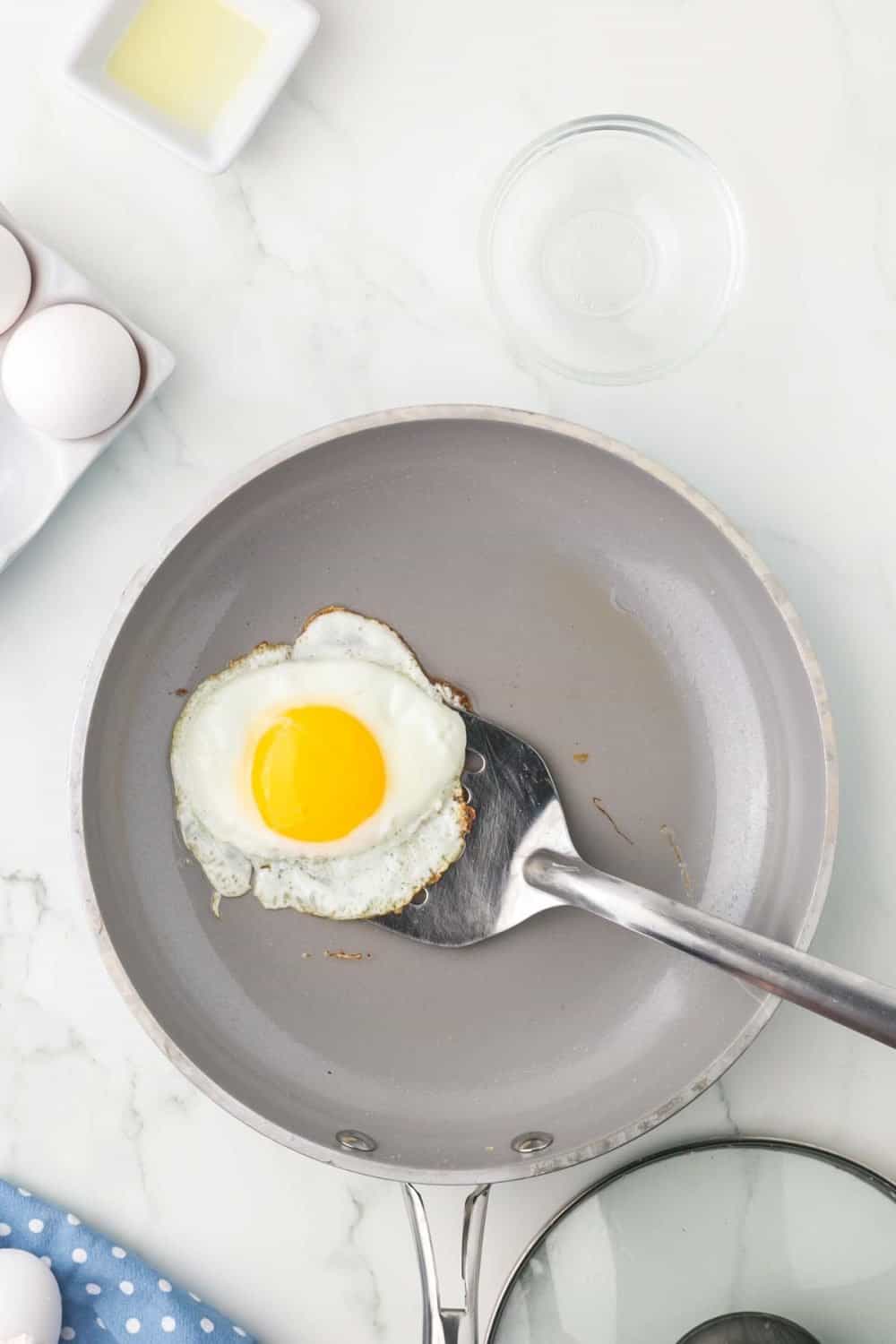
Why You’ll Love This Recipe
- It’s fast to make, giving you a delicious breakfast in no time.
- Tasty with a variety of foods, it’s perfect for any meal.
- Full of protein and good for you, it’s a healthy way to start your day.
Recipe Ingredients
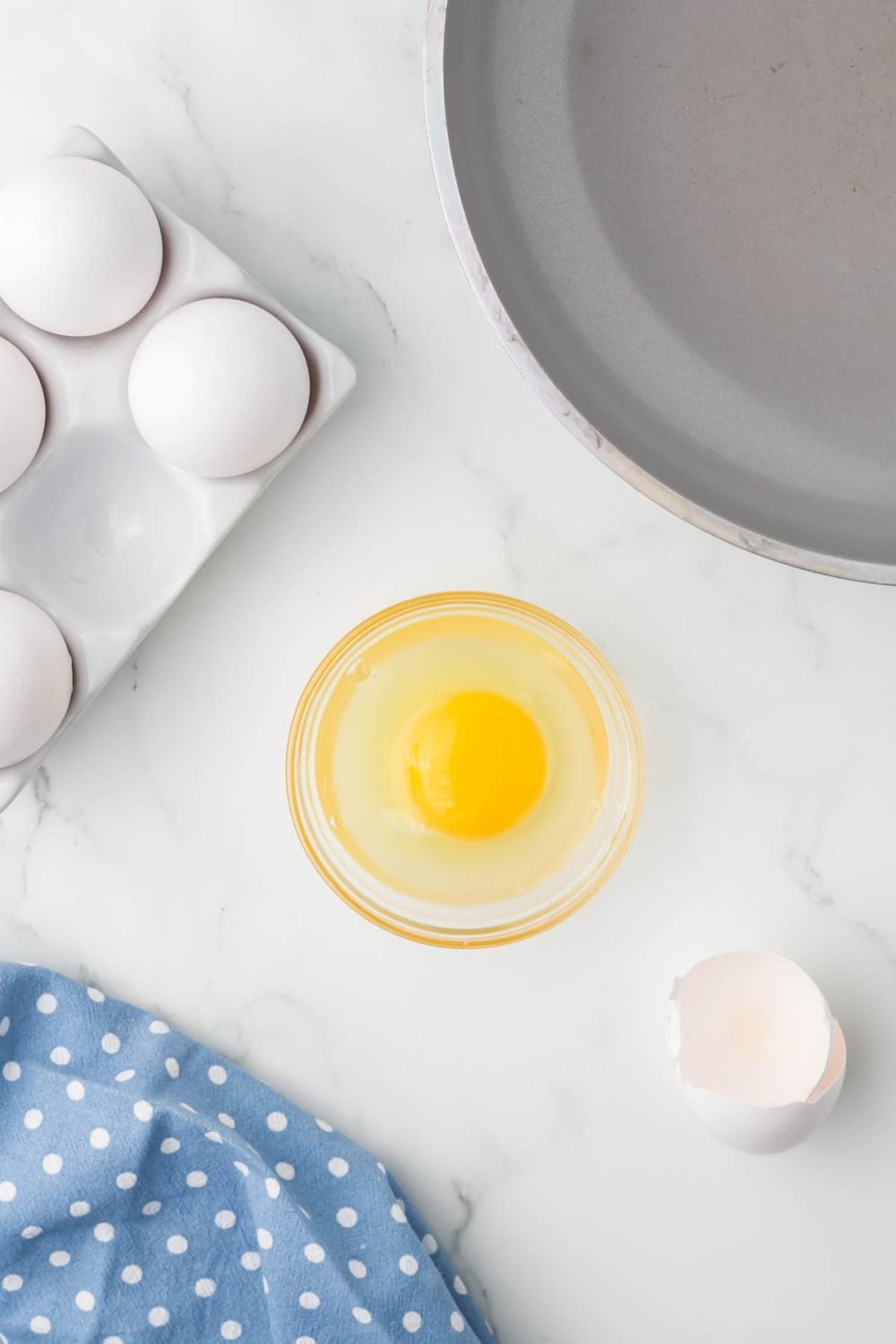
- Large eggs
- Butter or cooking oil per egg
- Salt and pepper
See the recipe card for full information on ingredients and quantities.
Popular Substitutions and Variations
- Over Medium or Over Hard: Cook the eggs a bit longer if you prefer the yolk more set.
- Herbs and Spices: Add herbs like chives or spices like paprika for an extra flavor kick.
- Cheese: Sprinkle some grated cheese over the eggs just before flipping for a cheesy twist.
How To Make Over Easy Eggs
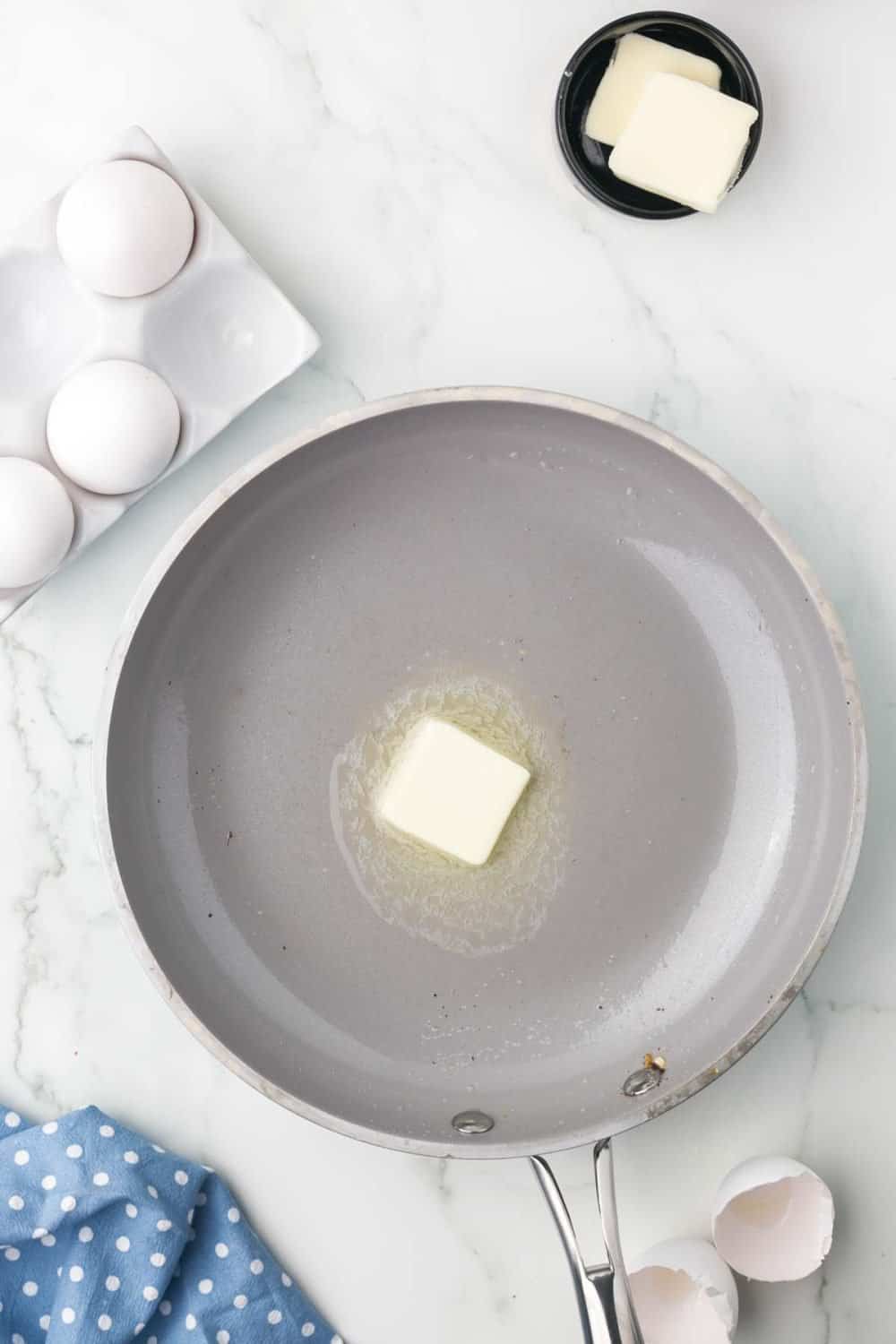
Step #1. Heat a non-stick skillet over medium-low heat and add the butter or cooking oil.
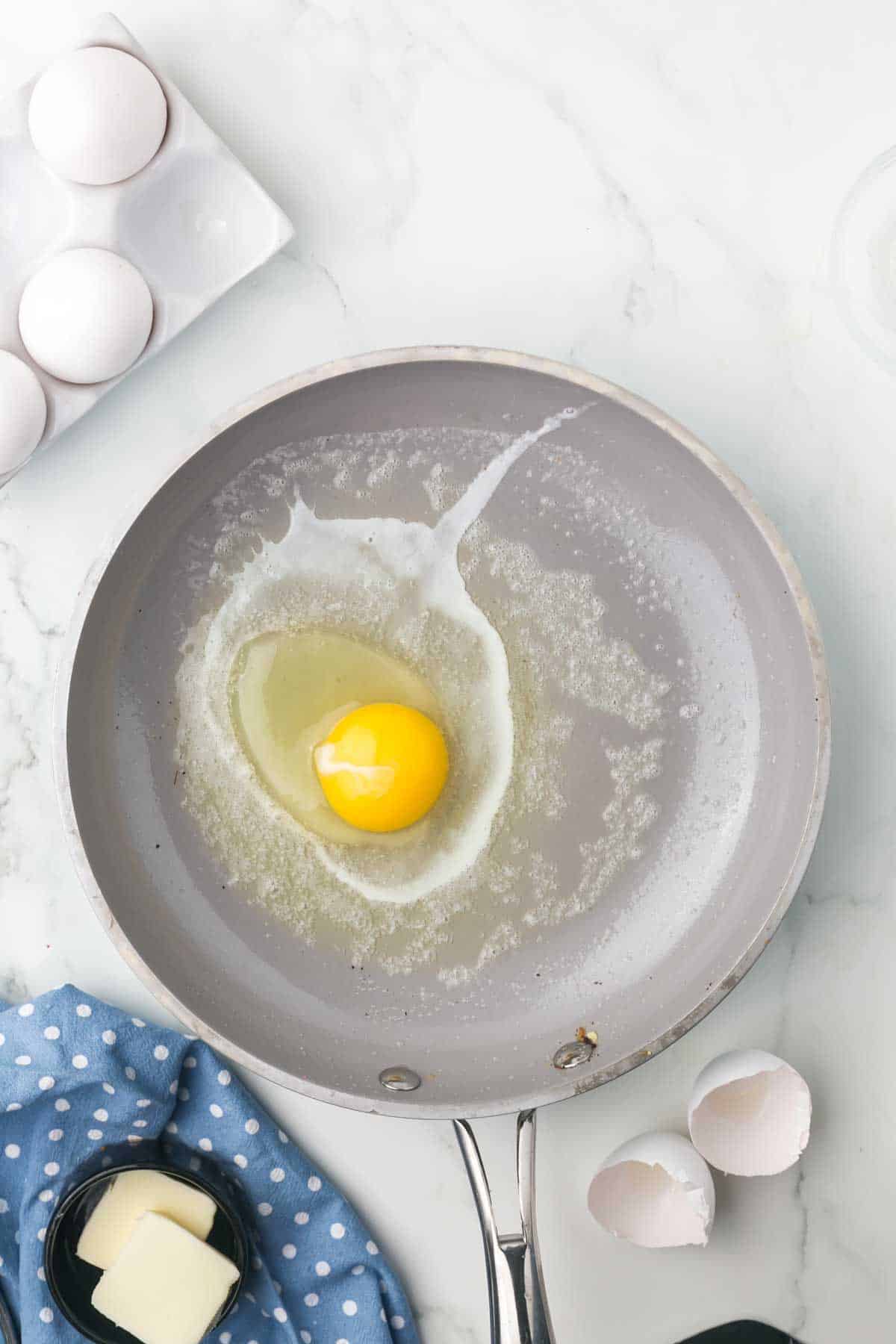
Step #2. Crack the egg into a small bowl. Once the butter or oil is hot and shimmering, carefully slide the egg into the skillet. Season with a pinch of salt and pepper if desired.
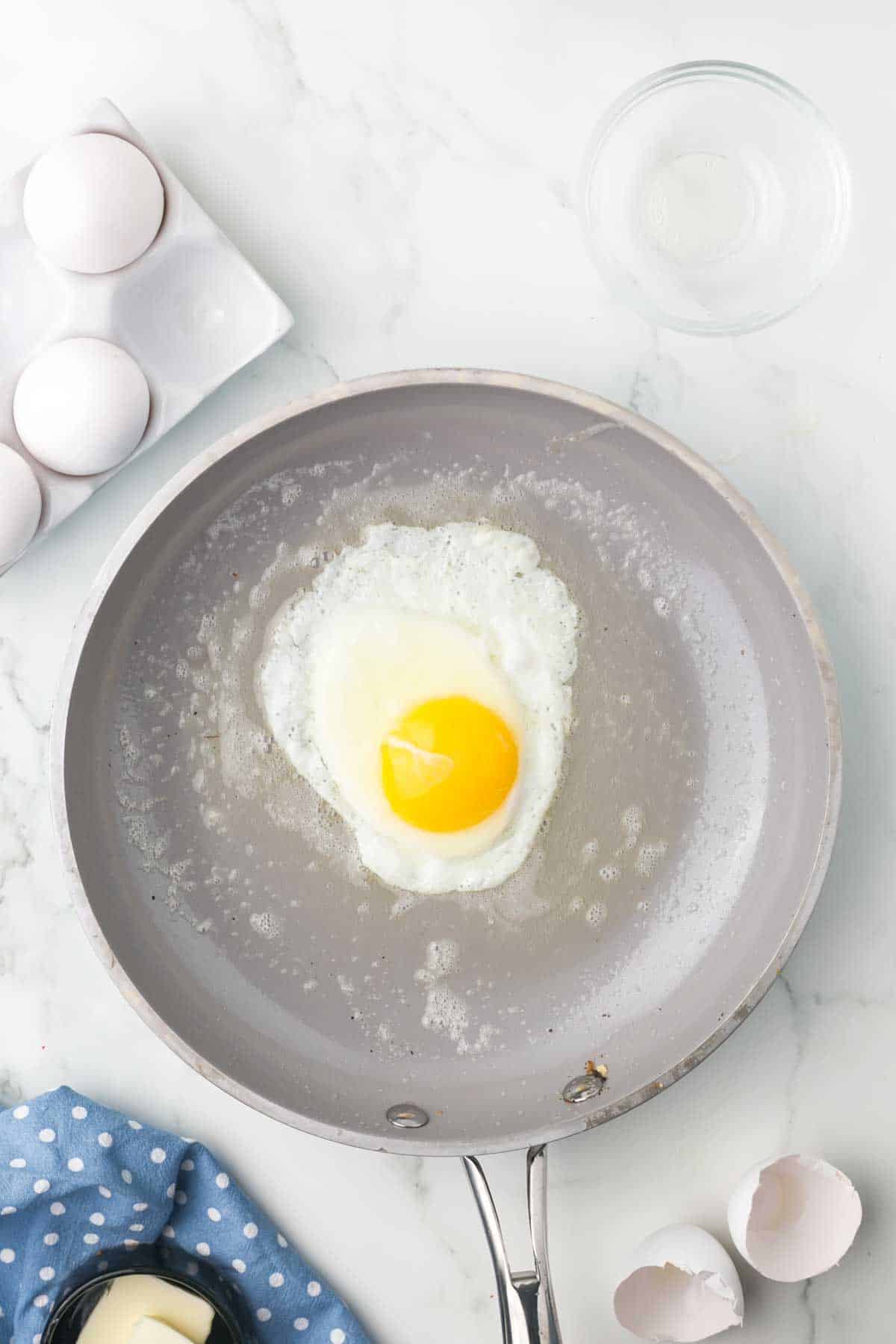
Step #3. Allow the egg to cook for about 2-3 minutes until the white is fully set. Gently flip the egg using a spatula and cook for an additional 1-2 minutes for over-easy, or longer for over-medium or over-hard.
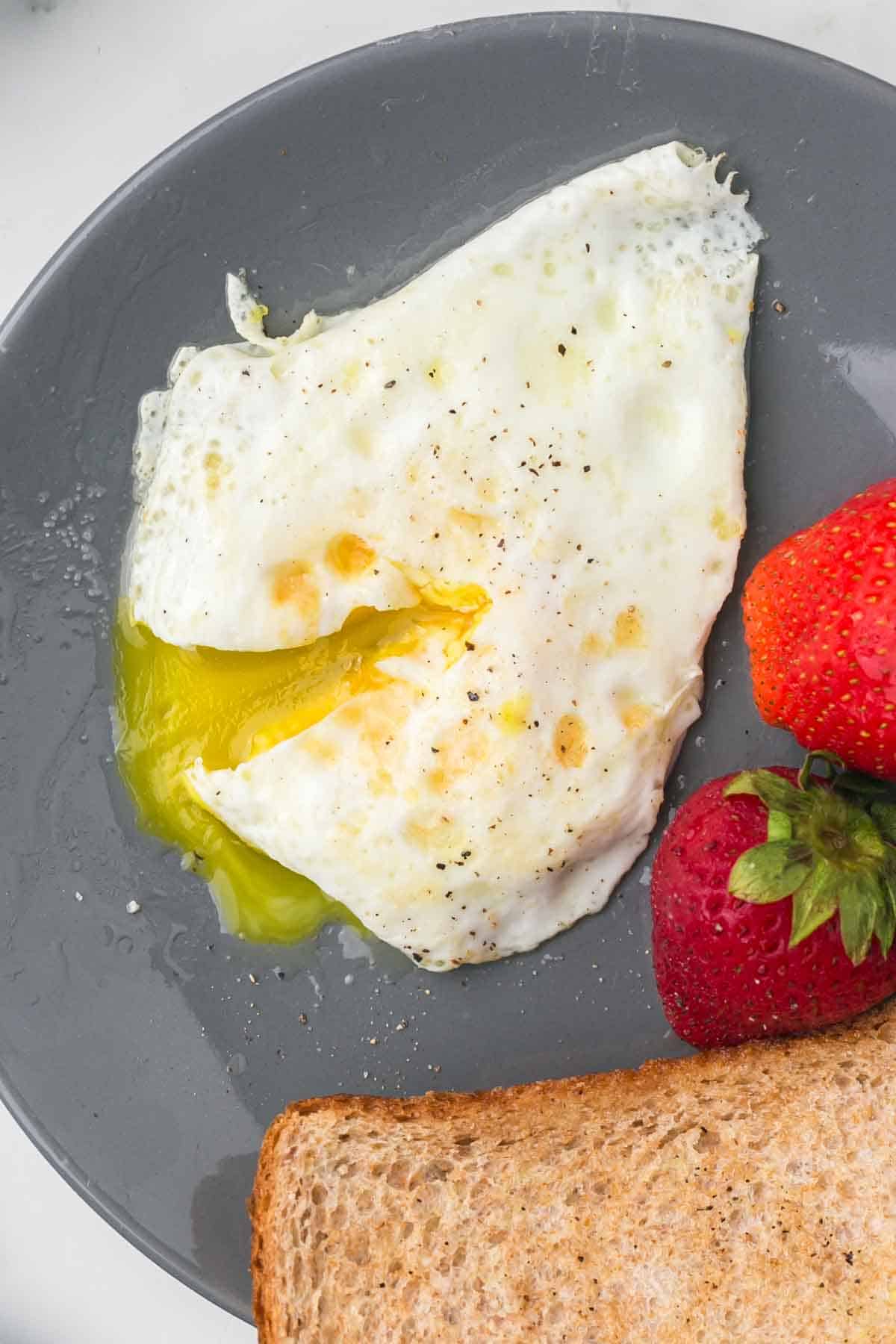
Step #4. Carefully remove the egg from the pan and serve with the yolk still slightly runny.
Recipe FAQs
Over easy has a runny yolk, over medium has a partially set yolk, and over hard has a fully cooked yolk.
Carefully slide a spatula under the egg, supporting the yolk gently. Use a swift and confident motion when flipping to avoid breaking the yolk. A thin metal spatula works well.
After flipping, cook the eggs for about 1-2 minutes to set the whites and create a thin film over the yolk while keeping it runny.
Yes, you can use cooking spray as a lighter option to prevent sticking and create a slightly crispy edge.
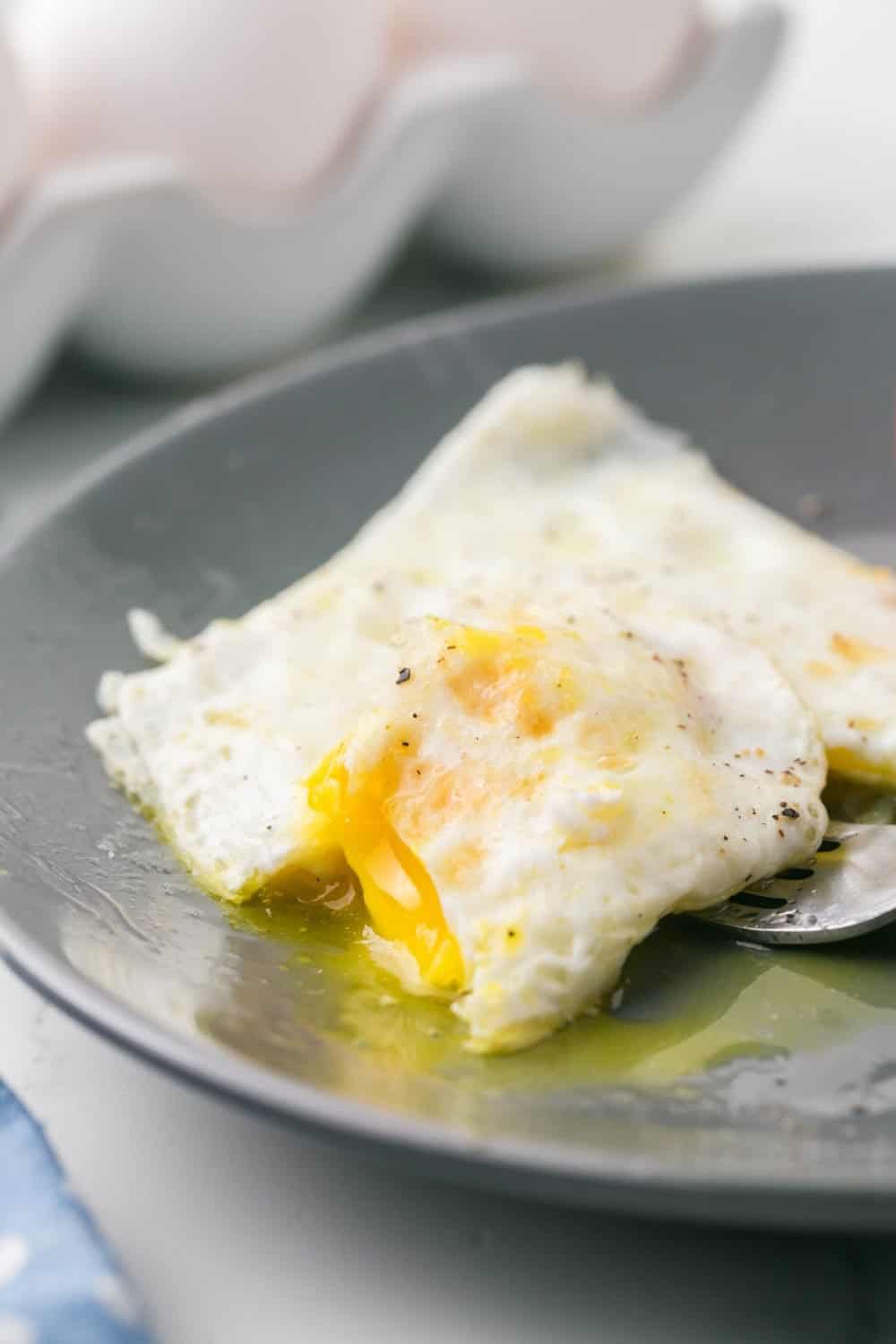
Expert Tips
- Fresh eggs hold their shape better and are less likely to spread in the pan.
- Cook the eggs on medium to low heat to avoid overcooking the yolk.
- A good non-stick skillet is key to easily flipping the eggs without breaking the yolk.
- Making over easy eggs is an art. Don’t get discouraged if it doesn’t work perfectly the first time.
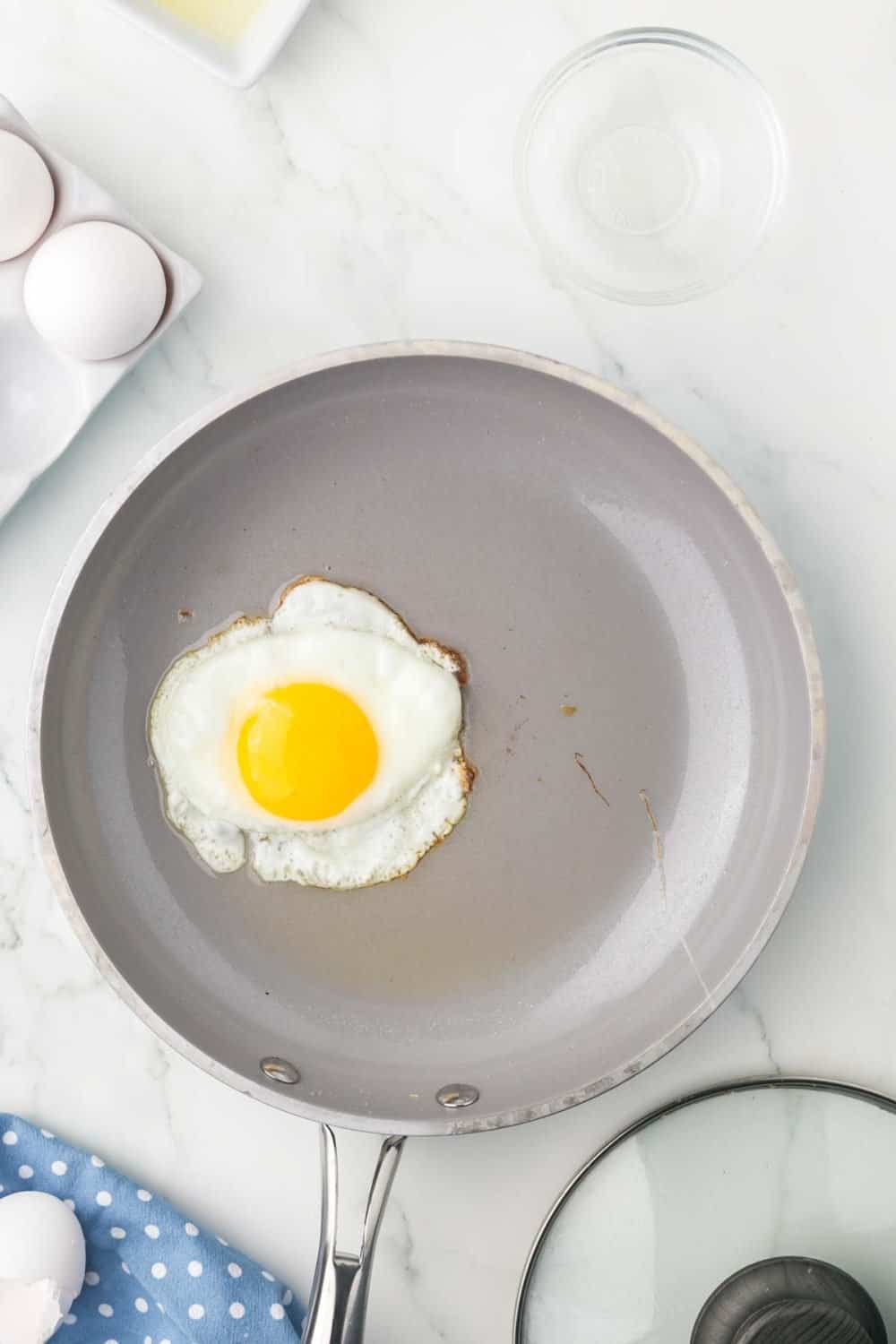
Can I make multiple over-easy eggs at the same time?
Yes, you can cook multiple over-easy eggs simultaneously in a larger skillet or pan, ensuring there is enough space between them.
What dishes can I serve over-easy eggs with?
Over-easy eggs are versatile and can be served on their own, with toast, in a breakfast sandwich, or as a topping for dishes like burgers and salads.
More Breakfast Recipes To Consider
Breakfast Casseroles
Easy Egg and Potato Breakfast Casserole
Pancake Recipes
Easy German Pancake Recipe
Breakfast Casseroles
Easy Bacon and Cheese Egg Bake
Breakfast Casseroles
Biscuits and Gravy Casserole
Did you make this recipe? Leave a ⭐️ review and share it on Instagram, Facebook, or Pinterest!
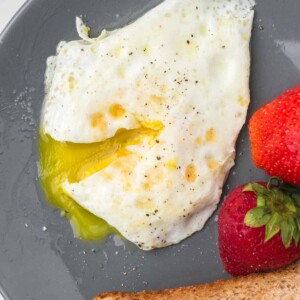
Over Easy Eggs
Ingredients
- 6 large egg
- 1-2 tablespoons of butter or cooking oil per egg
- Salt and pepper, optional
Instructions
- Heat a non-stick skillet over medium-low heat and add the butter or cooking oil.
- Crack the egg into a small bowl.
- Once the butter or oil is hot and shimmering, carefully slide the egg into the skillet.
- Season with a pinch of salt and pepper if desired.
- Allow the egg to cook for about 2-3 minutes until the white is fully set.
- Gently flip the egg using a spatula and cook for an additional 1-2 minutes for over-easy, or longer for over-medium or over-hard.
- Carefully remove the egg from the pan and serve with the yolk still slightly runny.
Notes
- Using a non-stick skillet is crucial for easy flipping and ensuring the egg doesn’t stick.
- Medium-low heat is key. Too high, and the egg will cook unevenly; too low, and it won’t cook properly.
- Crack the egg into a bowl first to avoid shell bits and to ensure a gentle transfer into the pan.
- Both work well. Butter adds flavor, while oil can withstand higher heat without burning.
- Season with salt and pepper after placing the egg in the skillet to enhance flavor.
- Adjust the cooking time for desired doneness – less time for a runnier yolk, more for a firmer yolk.
- Be gentle when flipping. If you prefer a runny yolk, be extra careful not to break it.
- Serve immediately for the best texture and temperature.

